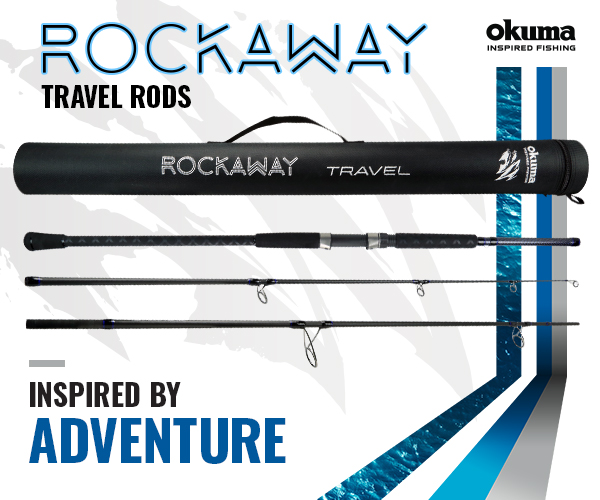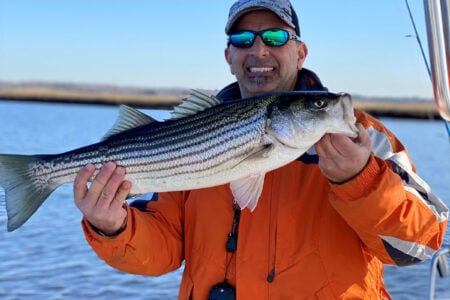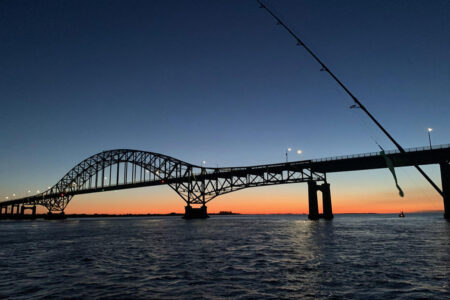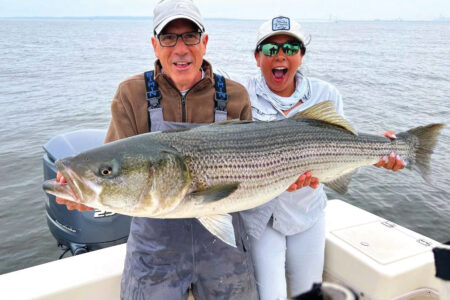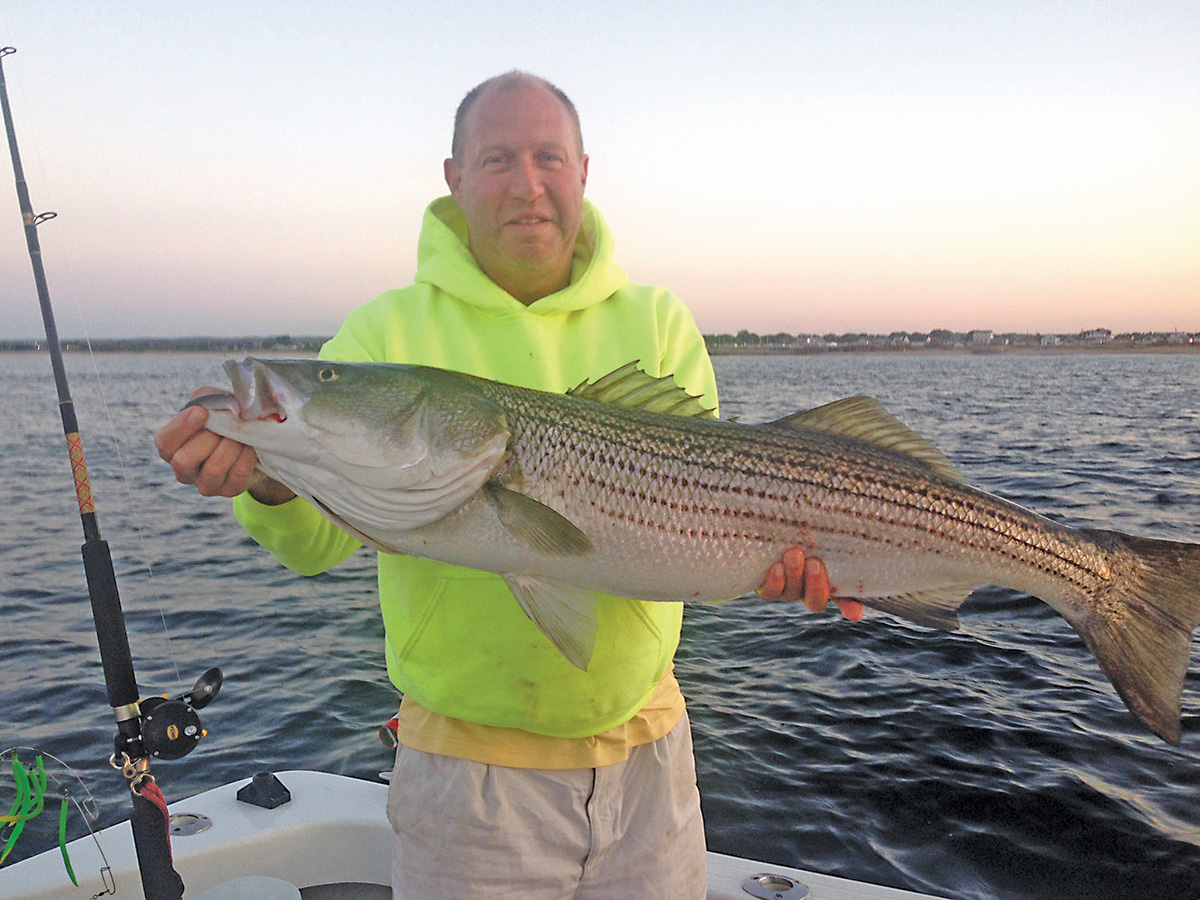
The most common complaint that I hear about fishing with wire line for striped bass and bluefish is that it’s heavy and cumbersome to use. Most people associate it with an image of jigging a broomstick-like rod back and forth for hours with 300 feet of wire line and a 6-ounce jig at the end. While this is one way to do it, it is not the only way. Then there’s the survey that I recently saw on social media debating whether or not it was “sporting” to use wire line. It’s time to set some misconceptions straight because not only can you go light with wire, but it’s just as sporting as well.
Like with most things, it’s all in your approach and what you enjoy. Most of the fishing I do with my guests or customers that involves wire line is done on lighter tackle that is no heavier than that if we were fluke fishing or drifting eels. When I did a recent seminar for a fishing club they were amazed that you could fish lightweight wire and had only thought of it as a heavyweight’s game.
While there’s not much question that fishing with wire line can be downright effective, I have a lot of guests and/or customers on the boat and not all of them enjoy using heavy tackle. Children especially struggle with the weight of those large rods and heavy reels. Add on a nice bass or bluefish and it’s just too much for them, so I understand where the misconception about its use stems from. To take advantage of the benefits of fishing with wire I’ve downsized a lot of my wire outfits to lighten the gear so that the crew doesn’t have to struggle with it either. While I can’t fish heavily-weighted umbrellas or jigs with them, I can still fish the lighter ones and can still seductively bounce lighter jigs, and the bass respond just as well!
Go Light, Go Right!
You can’t just grab any old rod and reel and spool it up with wire and expect it to perform properly. The rods I use are lightweight and have a soft, flexible tip with some backbone in the lower two-thirds. To give you an idea on the tips, they’re typically in the magnitude of a 5.5 to 7.5 tube size, or about half of what you normally see on wire line rods. For trolling, a rod in 6-1/2- to 7-foot range works best. Often times, rods that you see listed as salmon rods work nicely for this application. My favorite wire outfits are 7-foot rods that were made up by JB Tackle in Niantic CT (860-739-7419). They have light and flexible tips but enough backbone to pull a standard tube umbrella with a couple of fish attached. Over the years these rods have performed flawlessly on striped bass in excess of 50 pounds. While carbide guides used to be the old standard for wire line fishing, they are becoming less common as many of today’s standard guides are made of improved materials. The added weight and cost of carbide is no longer a requirement.
Again, to keep weight down I fish smaller reels than are typically seen with traditional wire line outfits and use either Penn 320GTIs or Fathom 25s. These reels are relatively light, keeping the entire weight of the outfit to a minimum. When comparing other reels for this application check out both their line capacity and overall weight. But what about needing a stainless spool to fish wire? While I wish these models offered a stainless spool version, they only come with aluminum spools as stainless spools in general are getting harder to find these days. If you use a mono or braid backing and remove the wire at the end of the season you should still get plenty of life out of the reels while using wire.
The only modification that you may have to do is to the level-wind mechanism. Depending on the size of your knots, you may or may not need to remove the level-wind, or you risk it popping one of your knots. I’ve found that the level-wind mechanism is open enough on my 320GTIs but I have to remove it on my fathoms. This is a quick adjustment as you can simply remove the guiding mechanism from the bar it rides across.
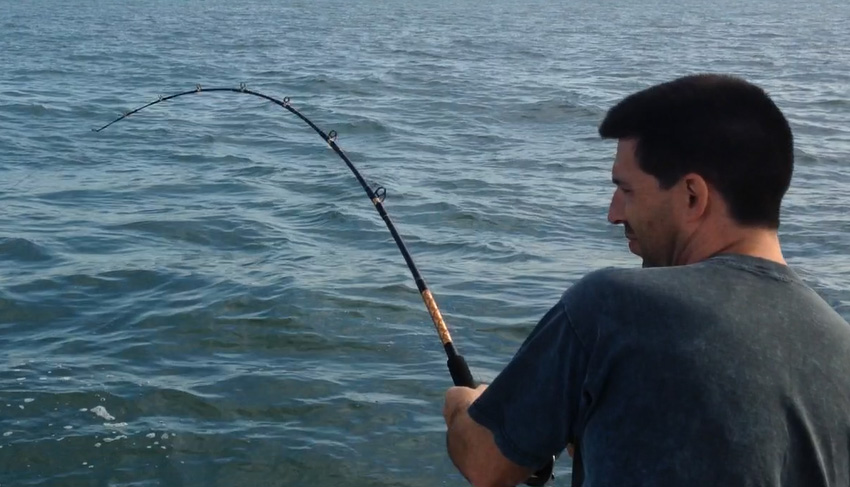
For line I usually spool up with 300 feet of 0.020 wire line, either Inconel 50-pound test or American Fishing Wire (AFW) 30-pound test. Below the wire I have either a monofilament or braid backing. I prefer the Inconel 0.020 line as it’s relatively easy to work with compared to some other wire lines, but both AFW and Malin make quality wire line in smaller sizes as well. I believe they both make it as far down as 10- to 12-pound test.
As with all of my wire outfits regardless of size, I splice in several 2-foot sections of Dacron at pre-measured intervals so that when jigging or trolling the Dacron rests in the rod tip and absorbs any back and forth. Because of the depths that I normally fish, I put a Dacron section at 100, 150, 200 and 250 feet. A different color for each makes them easily distinguishable, and I can quickly check that the crew has them set at proper depth. A monofilament or fluorocarbon leader of 8 to 10 feet finishes off the front end of the set-ups.
Put It All Together
If your crew is not into holding onto or working the rod as you troll, you can easily put them in out-rodders or rod-riggers. Being lighter, the setups are much easier to get out once a fish jumps on the hook, and these trolling devices help keep the tips both spread apart and closer to the water’s surface. Just remember to use a safety line that’s clipped to the reel to prevent any losses should the setup accidentally go overboard.
As with any wire line, you still need to be very careful to prevent the kinking of the wire. The lightweight tackle and ease of using a lighter weight wire removes many of the cumbersome aspects of fishing wire. The fun aspect is that it retains its no stretch attribute, and when you hook up you really know it! If you removed the level-wind mechanism from your reel you should have your anglers guide the line with their thumbs to prevent it bunching up to one side.
As I mentioned earlier, these lightweight wire outfits easily fish lighter weight jigs in the 1- to 3-ounce range. I can also troll standard or mini-sized umbrella frames with them. They will not work well with the heavy arms or a rig full of shad baits as the extra drag is just too much for them.
Hopefully you’ll give light wire fishing a try and see for yourself how effective it can be. It doesn’t come with many of the misconceptions that are normally associated with wire, and I’m sure that you’ll find that these outfits are plenty sporting and a great way to fish. Don’t forget to hang on – when you get a bite; you’ll know it with wire!
